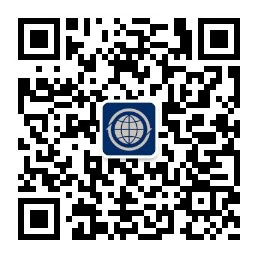by Deming Zhao | Jeffrey Shen | Ju Chen
Customs & Trade Compliance, Tariff Classification Service Center, Global Law Office
As of June 3, 2019, companies or trade associations in China for the first time have been able to apply for exclusion from Chinese extra tariff lists some goods originating from the United States (“US Goods”) and imported into China, pursuant to the Announcement No. 2 [2019] of the Tariff Commission of the State Council.
The Chinese Tariff Commission imposes the extra tariffs on the imports according to their 8-digit tariff codes, which is also the subject matter of supervision by the Chinese customs authorities. Importers in China, when applying for extra tariff exclusion, must ensure the 8-digit tariff codes for the goods in question are correct under Chinese Tariff Schedule. Otherwise, even if the application is approved, the importer will find itself in violation of Chinese customs law if using the wrong code to benefit from the exclusion, and the importer in China will be exposed to investigation by the Anti-smuggling Bureau (ASB), administrative or criminal.
1. What can a company benefit from such exclusion application?
If the exclusion application is approved, the tariff items covered by the application will be excluded from the extra tariffs for one year, and the extra tariffs already imposed may be refunded. However, import VAT is not refundable, and no refund is available for the goods under a tariff code if the extra tariff has been ceased or suspended before the exclusion application is approved.
2. What can be excluded from extra tariffs: a good of a certain description or a tariff item?
A tariff item means the goods covered by a given tariff code. The Ministry of Finance has publicized a list of goods for exclusion application purposes, with a remark that the descriptions of the goods under the same list are abbreviations for reference only, and the company must refer to the corresponding commodities under Chinese Tariff Schedule. This essentially means that the goods subject to exclusion application are tariff items, rather than goods of a certain description. If, however, the application is not to exclude all goods under a given tariff item, the company must still include the tariff item in its application, and make a distinctive description of the goods to enable Chinese customs to distinguish the excluded goods from non-excluded ones under the same tariff item.
3. What is the success ratio for such exclusion application?
(1) As it seems that Sino-US trade conflict can probably not be resolved soon, we expect that the Chinese government would be sympathetic about the “pains” afflicted by companies in China and would alleviate the same through the channel of exclusion applications, and there are some chances of success.
(2) The more companies apply, the more likely that the Chinese government will feel the painfulness of the industry relevant to a certain tariff item, and the success ratio may thus increase.
4. What is the channel for the application?
Application is to be submitted on the website of the Tariff Policy Research Center of the Ministry of Finance. The applying company can register, login and then fill out the exclusion application online (https://gszx.mof.gov.cn)
5. What is the scope of the first round of exclusion applications?
(1) Timeframe
The exclusion applications of the first round can be submitted sometime from June 3, 2019 till July 5, 2019.
(2) Application coverage
The guides for the exclusion application have listed 734 tariff items (8-digit) permissible for the first round applications. For details, please refer to Annex 1 of Guides on Application for Excluding Extra Tariffs on Goods from the United States, which can be found on the website: https://gszx.mof.gov.cn. The extra tariff for these tariff items is 25%.
6. What is the scope of the second round of exclusion applications?
(1) Timeframe
The exclusion applications of the second round can be submitted sometime from September 2, 2019 to October 18, 2019.
(2) Application coverage
The second round covers tariff items listed in Annex 1 through Annex 4 of the Tariff Commission of the State Council Announcement No. 6 [2018] as follows:
(a) Annex 1, 25% as the extra tariff, 2943 tariff items.
(b) Annex 2, 20% as the extra tariff, 1078 tariff items.
(c) Annex 3, 10% as the extra tariff, 974 tariff items;
(d) Annex 4, 5% as the extra tariff, 662 tariff items, and among them 67 tariff items of automobile and spare parts are not eligible for the application given suspension of extra tariff has applied to these items.
7. To which governmental authority the online application is to be submitted?
The Tariff Commission of the State Council, whose office locates in the Ministry of Finance of Chinese central government.
8. What are the basic data for such application?
The applying company is to prepare the following data:
(a) Business License (Scanned);
(b) Import clearance declaration documents (for the period of 2017-2019) for the goods covered by the application (in PDF, in the order of five import shipment declaration documents with the highest import values only);
(c) Explanation of market share and sales ranking of the covered goods in the regional and/or country market;
(d) Basic information about the applying company: Unified Social Credit Code, Enterprise Name, Enterprise Group Name, Industry Association Name, Main Business Scope, National Economy Industry Classification, Enterprise Registration Type;
(e) Goods Information: Description, tariff code and usage;
(f) Import data: Quantity and amount of imports of the covered goods from 2017 to 2019. Separate data about imports from the States and imports from other five countries (in the order of highest import quantity and value), separate data for pre and post extra tariff imposition.
9. What does the applying company need to watch out in preparing the exclusion application?
(1) Differentiation in goods
If the company intends to exclude some but not all goods under a given tariff item, the company may use the ten-digit tariff code. If no such ten-digit tariff code is available, the company must describe the goods to be excluded in detail. The description must enable Chinese customs to identify your goods from others.
(2) Difficulty in substitution
The applicant must explain why the given imports of US Goods cannot be substituted by goods of other origin. Substitution difficulty is the most important part of the application. Without a convincing explanation on this point, the success ratio for the application is slim. In explaining the substitution difficulty, the following elements are probably relevant:
(a) The US Goods embody high or new technology, which cannot be produced by other countries;
(b) The performance, quality and technical indicators of US Goods are irreplaceable;
(c) The similar goods of other origin cannot reach the same degree in safety, stability and environmental protection as that of US Goods;
(d) The capacity of other countries to produce the similar goods does not meet market demand in the short term; and/or
(e) Detailed comparison of US Goods to similar goods to show the irreplaceability of US Goods, if possible.
Depending on the different situations of goods, the explanation of substitution difficulty needs to be fully substantiated by reliable data.
(3) The economic damage on the part of the applicant
This content must be supported by the sharp comparison of the sales volume, profit margin and so forth calculated for the phases before and after the tariff increase, and thus to quantify and illustrate the economic damage afflicted on the part of the applicant. Efforts must also be made to identify the specific business characteristics and market position of the applicant, which may help to make the damage description special and convincing to the authority.
(4) Damage or adverse social and industrial consequences
Causation explanation must be well developed between the tariff increase and the consequences as follows:
(a) Direct economic damage to the industry;
(b) The impact on the development of the industry, the negative effect on the upstream and downstream industries, and the harm to the supply chain in related industries;
(c) Damage to continuity and sustainability of technological progress;
(d) The effect of production capability relocation on local economy, employment and social stability if any;
(e) The effect of failure to choose environmentally friendly goods on environmental protection if any;
(f) Consumer experience degradation caused by cost increase;
(g) Less imports which affect the safety and health of end-users, and so forth.
10. What can external consultants help in the exclusion application?
The external consultants or lawyers can help the applicant to determine (a) whether the import tariff code used is legitimate and accurate and (b) the contents of application using their practical experience in management or supervision of imported goods of different industries. The tariff classification experts of Global Law Office are such experienced professionals with many years of customs tariff classification and supervision as customs officers of the imported goods of different industries. They also have many successful cases of tariff code or item adjustment projects approved eventually by the Tariff Commission of the State Council.









